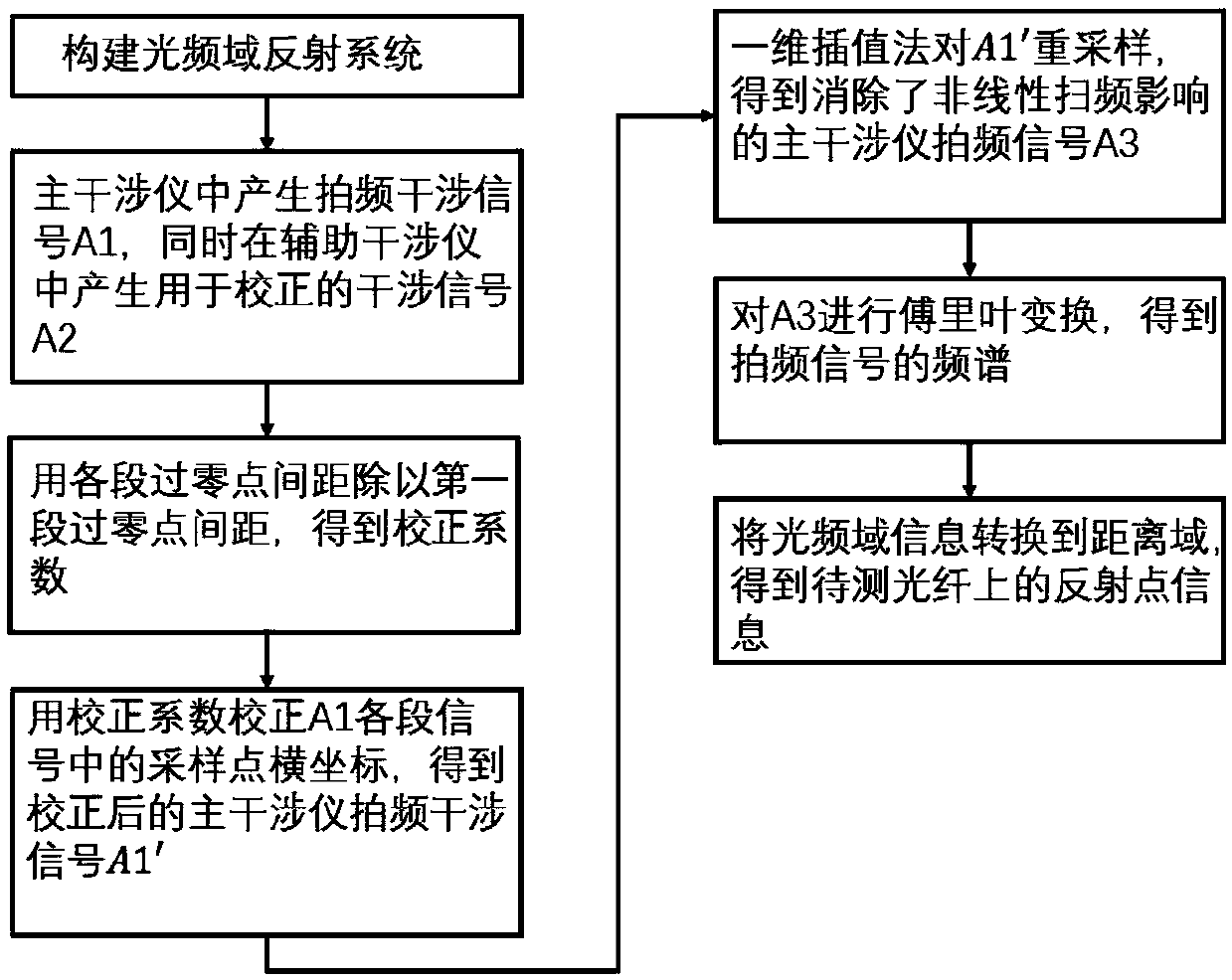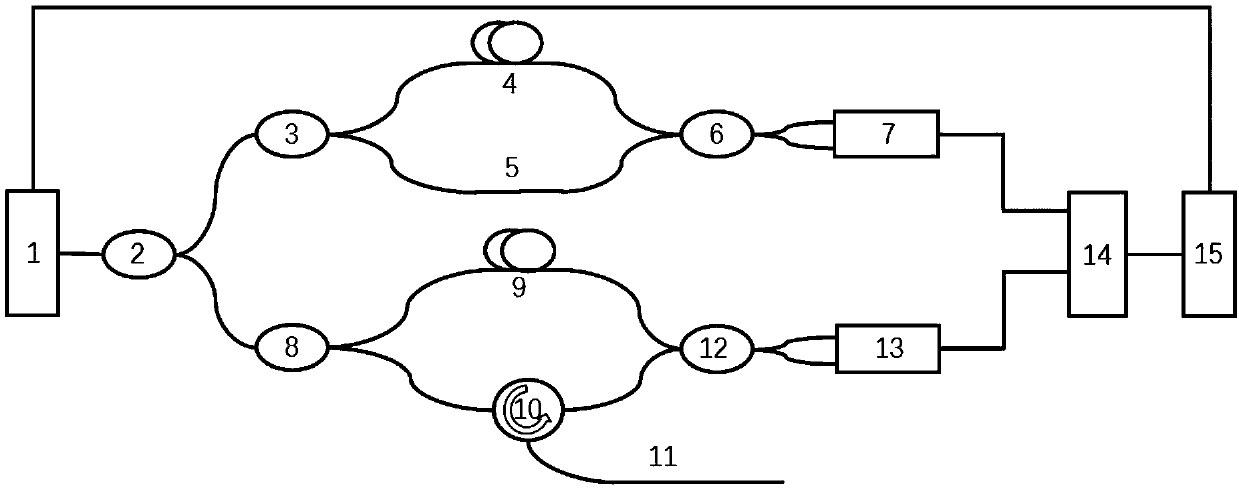Method for correcting nonlinear sweep frequency of tunable laser in optical frequency domain reflectometer
An optical frequency domain reflectometer and a technology for tuning lasers, which are used in instruments, converting sensor outputs, and using optical devices to transmit sensing components. It can solve the problem of high sampling rate and data volume requirements, measurement distance, and compensation effect limitations. problem, to achieve the effect of real-time correction
- Summary
- Abstract
- Description
- Claims
- Application Information
AI Technical Summary
Problems solved by technology
Method used
Image
Examples
Embodiment Construction
[0032] Below in conjunction with accompanying drawing, technical scheme of the present invention is described in further detail:
[0033] OFDR systems use swept frequency lasers. Assuming that the laser sweeps linearly, its sweeping speed is γ, and the initial frequency is f 0 , then its frequency is expressed as:
[0034] f(t)=f 0 +γt
[0035] In the OFDR system, the reflected or backscattered light generated at a certain position of the optical fiber interferes with the reference light to obtain a single-frequency beat signal. The frequency of the beat signal is the frequency difference between the reflected light and the reference light. The reflected light and the reference light are lights emitted by the laser at different times, and the time interval corresponding to the beam emission is equal to the group delay difference between the reflected light and the reference light. When the laser sweeps linearly, since the optical distance from the reflection position to th...
PUM
 Login to View More
Login to View More Abstract
Description
Claims
Application Information
 Login to View More
Login to View More - R&D
- Intellectual Property
- Life Sciences
- Materials
- Tech Scout
- Unparalleled Data Quality
- Higher Quality Content
- 60% Fewer Hallucinations
Browse by: Latest US Patents, China's latest patents, Technical Efficacy Thesaurus, Application Domain, Technology Topic, Popular Technical Reports.
© 2025 PatSnap. All rights reserved.Legal|Privacy policy|Modern Slavery Act Transparency Statement|Sitemap|About US| Contact US: help@patsnap.com



